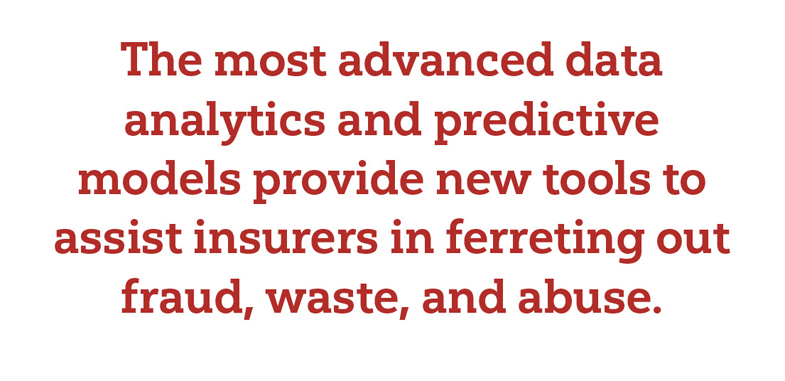How tech is enabling the future of this insurance product
By Robert Eaton
There’s a mismatch of sorts between the demand for, and provision of, long-term care insurance (LTC, LTCI). The silver tsunami of baby boomers will wash over the land of retirement when the final boomer reaches age 65 in 2029. Outside of the (hopefully confined) window of the pandemic, in the U.S. these retirees are living longer than ever before.
Most of these aging consumers (56% according to a recent survey[1]) believe that Medicare will pay for their LTC needs should they become incapacitated in their daily routine from declining mental or physical health—this despite that program’s consistent messaging that it does not provide LTC services. The private, standalone traditional LTCI market covers between 6 million and 7 million people today.[2] Other customers have purchased different forms of LTC (or similar) coverage such as chronic illness accelerated death benefits, hybrid life + LTC policies,[3] and short-term care. Finally, public programs such as Medicaid—which enrolled approximately 8 million seniors in 2020—will cover some LTC needs for those who qualify.
In total, fewer than 20 million people may have some substantial LTC coverage, while there are more than 54 million people aged 65 and over in 2021. Yet about 1 in 2 seniors will need some form of long-term care.[4] This dearth of insurance protection against future LTC needs emerges from the hard lessons of the past two decades of standalone LTC insurance, and from stakeholders who view LTC as too risky to insure.
At this time of seeming misalignment between demand and supply, enter a wide cast of emerging businesses and solutions that stand to reinvigorate the LTCI market and revolutionize care for the elderly. The value chain of LTC insurance is being remade before us in all aspects: sales and marketing, underwriting, policy and claims administration, fraud waste and abuse prevention, pricing and reserving and inforce management, and the customer experience through their ultimate care needs.
Sales and Marketing
Today’s LTCI sales come primarily through brokers and agents selling to individuals as well as selling to employees through the worksite. Most individual sales are made directly through an insurance agent or adviser, but direct-to-consumer trends—like those we see in life insurance and P&C markets—will likely one day test the waters of the LTCI market. This swell may happen slowly, first through permanent, direct-to-consumer life insurance policies with accelerated death benefit features.
Direct-to-consumer
Direct-to-consumer, simple individual term life insurance products are sold through a number of new insurance technology (insurtech) companies. Many of these life insurtech companies allow customers to apply for coverage online and complete a sale within minutes. In most of these cases a legacy insurance carrier underwrites the policies and accepts the risk. The insurtech company provides a digital platform and serves as the interface to the consumer: collecting premiums and engaging with the policyholder.
Marketing for these products is done largely online, where marketing strategies can be informed by a consumer’s digital history. Online strategies may be mature in some digital consumer markets, where companies deliver ads for products based on a consumers’ digital profile and prior purchasing decisions. But those strategies are still evolving for online sales of life insurance. An effective marketing strategy will deliver not only a high quantity of customers, but a selection of risks that is palatable to insurers’ appetites.
Like other technologies such as virtual conference calls and app-based grocery delivery, what was formerly a nice-to-have became a virtual necessity during the pandemic. Consumer demand for life insurance purchases hastened the advance of direct-to-consumer life insurance sales,[5] and had many other meaningful effects on the life insurance and LTC markets (more on this later).
Worksite
Currently LTC or chronic illness coverage is not widely available through direct-to-consumer marketing and sales. Instead, sales of hybrid life+LTC products thrive in the individual retail and voluntary worksite markets. In the worksite voluntary sale, tech is again king, as benefit administration (BenAdmin) platforms are the key gateway to accessing eligible employees. Seminars[6] and conferences[7] attract hosts of these new BenAdmin companies showcasing the advancements in technology. These companies serve to facilitate a smooth customer experience and optimize the insurer’s sales. BenAdmin platforms provide decision-support tools and targeted marketing campaigns, and employ the “Amazon model” in the worksite sale to showcase the value of hybrid life+LTC products to the customer. These insurtech companies integrate with both the insurer and employer, which can be a formidable task given the legacy systems embedded in many of these partners.
Underwriting accelerated
To answer the call of the direct-to-consumer future, accelerated underwriting methods today have matured and quickened to a pace that allows for faster delivery of coverage. Life insurance application and underwriting information—and decisions on that information—can be delivered electronically in minutes. This technology, which has been in development for over 15 years, most often uses customer-authorized prescription drug data histories, medical records, and other data to assign a risk classification or score to an applicant. This score (and other information) is indicative of the applicant’s mortality risk, and insurers use this to provide a swift premium quote.
The technology harnesses predictive models and rules-based engines, trained on oceans of data, to deliver accurate risk assessments used by company actuaries and underwriters alike. Because of the parallels between life and LTC underwriting, it is natural to assume that companies will one day employ similar underwriting models for use in direct-to-consumer life insurance products with LTC or chronic illness benefits.

Fortunately, these decision engines have provided information for traditional LTC insurers for years to assist with underwriting. The LTC underwriting engines are primarily rules-based, and built on prescription drug and medical histories, much like their life insurance counterparts. These models provide almost instant underwriting support as they assign risk levels to LTC applicants for an underwriters’ decision.
While accelerated underwriting has taken purchase in the industry, the technology still has a way to go to earn the business of most insurance company customers. This technology takes take time to adapt to a direct-to-consumer marketplace, and businesses will take time to adopt it, particularly for benefits that insurers deem risky like LTC.
There may be some time before a viable hybrid life+LTC (or standalone LTC) direct-to-consumer product arrives, but it is within sight.
Managing policies and claims
Administration
While front-end tech is advancing at a rapid pace, traditional insurance, and LTC insurance in particular, has not been swift to adapt new technologies for administering legacy blocks of business. Up until the last decade, it was not uncommon for legacy LTC insurers to collect premiums only by check or by ACH, instead of by credit card or through online payment (it’s hard to imagine this happening in any other retail setting in our lives).
But as with many legacy lines of insurance business, LTCI policy and claims administration has tended toward centralization, with a few TPAs administering over 20% of the legacy private LTC market in some way. This consolidation brings with it economies of scale to policy administration, and the ability to share learnings and innovation across large swaths of business.
Fraud, waste, and abuse
While insurers lament anti-selective risks on their business, they are also faced with policyholders filing illegitimate claims. Perpetrators come in the form of those who obtained coverage fraudulently, who abet or file fraudulent claims, or who have a legitimate LTC need but abuse the terms of their coverage.
LTC insurers surveyed in a 2019 Society of Actuaries report[8] delivered a poor report card: Thirty-nine percent of respondents indicated that the industry was “either not so effective or not at all effective” at handling fraud, waste, and abuse. All of the respondents to that survey indicated that informal home care claims represented the largest portion of potential fraud.

To answer this call, the emerging tech of electronic visit verification (EVV) has arrived. Medicaid requires EVV[9] for personal care providers (January 2020) and for home health services (January 2023), and EVV is used more often today with insurer-paid private LTC providers. EVV relies on the coordination of technology between the payor and provider, using GPS to pinpoint when a caregiver arrives and leaves a specific location. EVV has been adopted to prevent certain fraud and abuse in home health care claims by verifying that a qualified professional is attending to the care recipient.
Finally, the most advanced data analytics and predictive models provide new tools to assist insurers in ferreting out fraud, waste, and abuse. These methods rely on fast computing and large data lakes, unavailable to insurers only a decade ago.
Unsupervised learning—where a model observes relationships and distributions of unlabeled data—can highlight correlations and anomalies that exist between variables in large data sets. Ordinary people like you and me are incapable of such processing without a computer, but it is no longer arduous to develop and run such a model on a computer (even a data scientist can do it). The results from these models are used to enhance the work of employees working in insurance fraud units—say those who are investigating provider fraud—calling attention to more cases that are worthy of their time and attention.
Pricing, reserving, and inforce management
The area of tech advancement nearest and dearest to this author’s heart is in the sophistication of the LTCI actuary’s toolkit. This advancement produces small but notable currents of revolution in product development.
Computing advancements
The most advanced pricing models for standalone LTCI and hybrid life+LTC products use an integrated first-principles modeling approach,[10] calculating future cash flows from granular policyholder assumptions. These models balance forecasted lives among active, disabled, lapsed, dead, and benefit-exhausted populations. Due to their complexity and the number of pricing cells required, these models run on cloud-based computing platforms that distribute the required calculations across thousands of nodes of computing power.
Standalone LTCI reserving commonly requires cash flow testing models, which are equally complex. Individual hybrid life+LTC reserving is now more process-intensive with the advent of principle-based reserving (PBR).[11] The PBR calculations of nested stochastic projections use compounded sets of assumptions to articulate future cash flows and liabilities. These calculation engines also require a vast array of computing power provided only through cloud-based platforms.
Inforce strategy evolution
Insurers commonly seek actuarially justified premium rate increases as a key inforce management strategy. To supplement this, inforce LTCI management continues to expand efforts on the claims and expenses side of the income statement. This makes sense today given that most traditional LTCI insurers expect more future paid claims than collected premiums. As a result, the time is approaching where insurers can implement inforce claims management programs to measure and achieve demonstrated ROIs.
To assist this, actuaries and data scientists have built inforce management predictive models[12] to incorporate new arrays of personal, social, medical, and prescription drug data. These models will better predict which inforce customers are more likely to have an LTCI need. In favor of both the policyholder and the insurer, health and wellness and outreach programs can be tailored to help prevent financially catastrophic, facility-based LTCI claims, and to help the elderly age in place[13] for longer.
Customer experience during care needs
At its core, long-term care insurance provides financial security for the insured and their family in a time of need. Even from inception, LTCI contracts have provided some non-financial benefits to help customers: from alternative plans of care, riders that allow for informal care, purchasing certain home modifications, and more.
A wave of interest
Insurers recognize that helping policyholders at or near the time of claim will improve the customer experience and can also prevent or delay the burdensome (financial; emotional) need for someone to enter an LTC facility.
To illustrate the groundswell of interest, as of June 2021 the tech incubator Plug and Play estimated that “in the last five calendar years, venture backers have invested more than $2.5 billion into eldercare and home health startups.” The Society of Actuaries has hosted three[14] annual[15] summits[16] on the innovations targeted at senior care, and the ILTCI Conference began holding the LTC Innovators Invitational Challenge.[17]
These industry gatherings have hosted dozens of companies with missions to help those in need of assistance on or before long-term care claim, or to help their families and friends. There are three key areas where tech companies have made headwinds to assist these customers: preventive support programs for those not yet in need of formal LTC, supporting the social circle of family and friends around the care recipient, and providing physical assistance to those in need of care.
Preventive support
Providing preventive support for LTC insurance customers, prior to their having a long-term care claim, can potentially forestall or prevent substantial LTC events. LTC insurance companies are primarily financial institutions, and not managed care or tech companies, so there is an opportunity for third-party innovation. These third-party solutions may come in the form of:
- Fall detection for a loved one;
- Enhanced communication and services to ameliorate social isolation; and
- Wearables to monitor vital signs.
In the area of Alzheimer’s research, scientists are working to detect the disease earlier than ever, including through indirect observational methods such as monitoring driving habits[18] and through the use of cell phones.[19]
The opportunity for preventive support for LTC looms large. The promise to insurers remains somewhat obscured behind a need for these preventive solutions to demonstrate financial success. Fortunately for the stakeholders involved, there is a confluence of incentives: customers as well as insurers and regulators are aligned on preventing severe LTC needs.

Social support for family and friends
Once someone has an LTC need, the social supports around them will become strained. These episodes of care can ebb and flow in severity, requiring more or less time and informal care from loved ones. Moreover, navigating the morass of eldercare services, care providers, health plans, government programs, and other odd jobs can be an onslaught for a new caregiver (just ask one). To assist the family support structure, venture capitalists have funded tech companies and private enterprise focused on:
- preventing caregiver burnout;
- providing resource guidance, specific to caregiver geography and circumstance;
- documenting the stories of their loved ones through professional writing; and
- remote monitoring of loved ones.
The caregiver is often left out of consideration when an elderly relative has real physical needs, but without that support network, the elder’s care can deteriorate fast.
Physical assistance
Perhaps most in-touch with an LTC patient, some tech entrepreneurs are developing robots and other devices to provide direct physical interaction with those in need of LTC. Robotics may provide simpler services such as delivering water and food (or medication), or bringing a touch-pad screen to a patient. Some senior care and nursing homes in Japan employ robots throughout their facility. Even simpler devices can be robotic in nature, including beds that transform into wheelchairs. And of course someone will use robots to tell dirty jokes,[20] as one Minnesotan requested in her nursing home. Life is short.
Robotics will probably never replace the need for actual human touch. Somewhere in this continuum between the human and the artificial is the point where humans control robotic surrogates. For instance, professional home health aides may control a physical robot located in a different town (or even a different country), manually guiding that robot as they help an elderly person move between rooms or complete their toilet. The surrogacy can also go in the opposite direction: elderly people with loss of motor skills may employ surrogates to interact with loved ones[21] in an effort to improve their quality of life.
The rising tide
Surrounding these awesome advances in the state of LTC, the industry remains baffled by secular and environmental trends. The human body continues to age (we are pushing more and more people into “the red zone” according to epidemiologist Dr. S. Jay Olshanshky[22]) and the more we extend life without concurrently extending health, the deeper will be the plight of those needing long-term care.
We currently battle trends of inflation, and the acceleration in the rise of the cost of providing certain long-term care services such as home health care. Further, the pandemic has stigmatized the use of facilities in some communities, rightfully fearful of the recurrence of communicable diseases. We should expect social norms about where we receive long-term care to change as well.
Interest rate movements reflect trends in the underlying product of the economy’s working population, with both sides of the equation influencing long-term care. Regulatory regimes at times bolster consumer confidence in products like LTC, and at other times yield uncertainty for potential insurance market entrants.
Technology is helping to reinvent the LTCI marketplace and will provide help on the issues at hand. With this innovation solving many of the technical issues surrounding LTC, we practitioners are provided more time to focus on the people we serve.
Robert Eaton, MAAA, MAAA, FSA, is a principal and consulting actuary with Milliman in Tampa, Fla.
References
[1] A Growing Urgency: Retirement Care Realities for Middle-Income Boomers, March 2019, Center for a Secure Retirement, https://www.centerforasecureretirement.com/posts/retirement-care-realities-for-middle-income-boomers [2] Publicly available insurer statutory financial data as of December 31, 2021, via SNL.com. [3] For this article we refer to life insurance policies with LTC or chronic illness benefits (accelerated and / or extended benefits) as “hybrid” policies. [4] “52% can anticipate having at least some need for LTSS”; Long-Term Services and Supports for Older Americans: Risks and Financing Research Brief, June 2015, ASPE, https://aspe.hhs.gov/reports/long-term-services-supports-older-americans-risks-financing-research-brief-0 [5] “In LIMRA surveys conducted this spring [2020], U.S. carriers reported expanding automated underwriting and taking other measures to make it easier for consumers to apply for life insurance while adhering to social distancing guidelines”, LIMRA: U.S. Life Insurance Policy Sales Increase 2% in Second Quarter Driven by Direct-to-Consumer, September 9, 2020. [6] LIMRA 2022 Enrollment Technology Strategy Seminar. [7] LIMRA 2022 Group & Worksite Benefits Conference. [8] Long-Term Care Insurance Fraud, Waste and Abuse Risk Management, June 2019, Society of Actuaries, Accessed May 15, 2022, https://www.soa.org/4a2154/globalassets/assets/files/static-pages/sections/long-term-care/fraud-waste-abuse-survey.pdf [9] Electronic Visit Verification, Medicaid.gov, Accessed May 15, 2022 https://www.medicaid.gov/medicaid/home-community-based-services/guidance/electronic-visit-verification-evv/index.html [10] Integrated and First Principles Modeling for Hybrid Life and Health Products, February 2022, Society of Actuaries, https://www.soa.org/digital-publishing-platform/emerging-topics/et-2022-02-armstrong/ [11] Long-Term Care Life Insurance Combination Product Valuation, A Public Policy Practice Note, American Academy of Actuaries, April 2022, https://www.actuary.org/sites/default/files/2022-04/LTC%20Combo%20Valuation%20Practice%20Note.pdf [12] Long-term care wellness initiatives: A simulated pilot program, December 2021, Milliman LARA, https://www.milliman.com/-/media/products/lara/12-10-21-milliman-lara_simulated-pilot-case-study.ashx [13] The Intercompany LTC Insurance Conference (www.iltciconf.org), the most widely attended LTC conference in the country, now includes (since 2021) an “Aging in Place” educational track to report on such trends. [14] LTC Tech Summit (2019), Society of Actuaries, https://www.soa.org/globalassets/assets/files/e-business/pd/events/2019/ltc-tech-summit/ltc-summit-flyer.pdf [15] Virtual ElderTech Summit (2020), Society of Actuaries, https://www.soa.org/prof-dev/webcasts/2020-eldertech-summit [16] Virtual ElderTech Summit (2021), Society of Actuaries, https://www.soa.org/prof-dev/webcasts/2021-elder-tech-summit [17] LTC Innovators Invitational Challenge, ILTCI, https://iltciconf.org/plugandplay/ [18] GPS driving: a digital biomarker for preclinical Alzheimer disease, 2021, https://alzres.biomedcentral.com/articles/10.1186/s13195-021-00852-1#Sec2 [19] Developing Measures of Cognitive Impairment in the Real World from Consumer-Grade Multimodal Sensor Streams, 2019, https://dl.acm.org/doi/10.1145/3292500.3330690 [20] Can Robots Save Nursing Homes? April 21, 2022, New York Times, https://www.nytimes.com/2022/04/21/realestate/nursing-home-robots.html [21] Immersive Control of a Robot Surrogate for Users in Palliative Care, https://dl.acm.org/doi/10.1145/3371382.3377445 [22] Shifting focus from life extension to ‘healthspan’ extension, UIC Today, https://today.uic.edu/shifting-focus-from-life-extension-to-healthspan-extension




